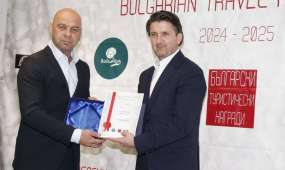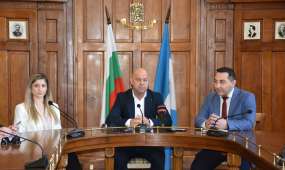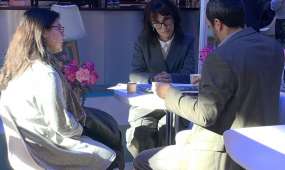Armenian Apostolic Church
phone: +359 32 632 804 email: [email protected] link: https://www.surpkevork.com/Armenian Apostolic Church Surp Kevork
Surp Kevork Church was originally an Eastern Orthodox Church, dedicated to St. George the Victorious. In 1767 the church was ceded to the Plovdiv Armenian Diocese. This is the only church with side compartments besides the central nave: one for women and another for men. Next to the church was built a chapel. After several reconstructions the church got its present outlook.
In front of the church and around it there is a large yard in a rectangular shape that surrounds the church complex. Part of it serves as a school yard from the time it was built in the first three decades of XIX century. The yard on the west side rests on a massive, high stone wall. In the past, the yard was intended for graveyard of prominent and wealthy Armenians from the community, as well as priests and prelates, who had died here.
In the churchyard, on the empty spot between the church and the erstwhile Surp Hach church, there is a preserved marble sarcophagus with a rectangular shape. Its lid is also made of marble and it is movable.
The church tower, probably constructed in the second half of XIX century, was semi-destroyed during the earthquake in 1928. The new tower was built on the same spot in the corner.
In the courtyard, in front of Tadey and Parteniy chapel to the west side, near the west staircase, still stands a well, made to the order of a noble Armenian, in memory of his deceased son. The well was built on May 5, 1877.
In the northern part of the churchyard is the former building of "St. Vartanants – Varavaryan" School, with an inscription in Armenian on elliptical marble plaque and the year of its construction in 1894.
On the south side of the churchyard, on the site of the old Armenian school, a three-storey building of the new Armenian school was built for the period 1943-1944. On the ground floor of the school is the office and storage facilities of the Armenian Church Board. The Krasirats Yehpayrutyun Community Centre ("Book-loving Brotherhood"), founded in 1883, is located here and has survived to this day.
In 1920-1922, Armenian refugees banished by the Turkish government as a result of the 1915 genocide and the Greek-Turkish war brought their faith and saved the ancient urns from desecration from the temples in Rodosto, Malgara, Chorlu, Edirne. Here it started living a second life. Today some of these priceless objects are arranged in the unique for Bulgaria and the world museum exhibition in the crypt of the church. It was opened for the celebration of the 1700th anniversary of the adoption of Christianity as state religion in 301 in Armenia. Multiple table and pectoral crosses, reliquaries, chalices, handwritten bibles, service books and others are stored here.
Of great value for the temple are its old icons, painted by icon-painters. Among them are The Holy Mother Hodegetria icon, created in late XVIII century by an unknown Armenian artist, The Holy Mother with the Child icon – a painting with a beautifully carved gilded frame by Nikola Odrinchanin, painted in 1838. His are also the typical for the Armenian churches of XIX century paintings of saints and biblical scenes.
The church complex, the House of Culture, the School "Victoria and Krikor Tyutyunzhian", the Community center Krasirats that are located on the same property at the foot of the hill Nebet Tepe represent a center of religious, educational and cultural life of Armenians in the city both in the past and today, which fits naturally into the citywide diverse life.











Add new comment